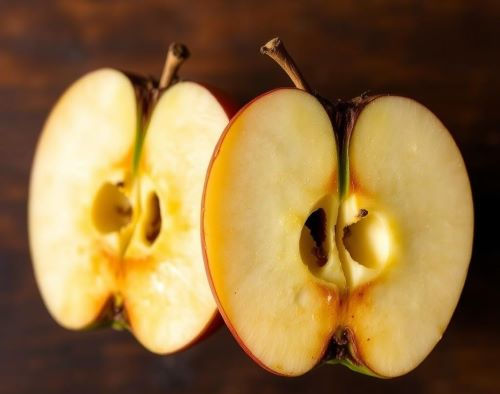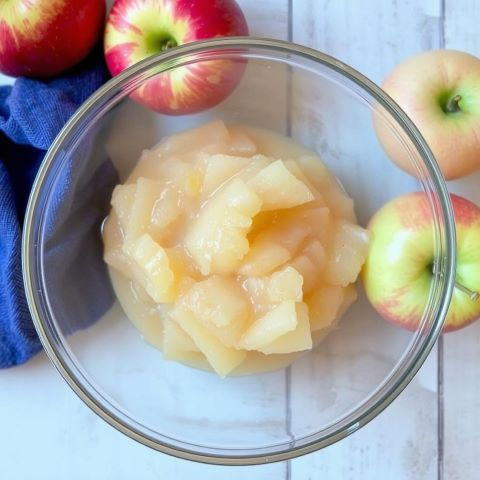Why Apples Turn Brown: Science & Nature
- Sylvia Rose

- Feb 17
- 4 min read
Updated: Feb 18
Apples turn brown when exposed to air. This phenomenon is enzymatic browning, a chemical reaction not limited to apples, but prevalent in the plant kingdom. Here's the science behind this color change and its effects.

The browning is a response to breakage of the cell walls when the apple is cut or bruised. In the cells of the apple, the enzyme polyphenol oxidase (PPO) also called tyrosinase dwells in one compartment.
Phenolic compounds like chlorogenic acid and catechins, responsible for flavor and antioxidant properties, reside in another. Damage to the apple allows oxygen to interact with phenolic compounds in the fruit.

The enzyme polyphenol oxidase (PPO), also called tyrosinase, rapidly converts these phenolic compounds into brown pigments or melanin. PPO activity can increase by up to 11 times when apples are exposed to air.
The injury triggers a series of reactions. PPO oxidizes the phenolic compounds into quinones. Quinones are oxidants and electrophiles.

Electrophiles accept electrons from nucleophiles. Examples of electrophiles include chlorine, iodine and boron trifluoride. Nucleophiles are elements such as oxygen, hydrogen and sulfur.
Highly reactive, the quinones quickly polymerize to form the large, brown pigments melanin. These are the same pigments responsible for the brown color of human skin after sun exposure.

Other Browning Fruit & Vegetables
While apples are the best known browner, many other fruits and vegetables undergo enzymatic browning. These include
Bananas: Brown quickly when exposed to air due to high PPO levels. Their browning is a sign of ripeness and eventual decay.
Pears: Like apples, pears are rich in phenolic compounds and susceptible to browning. Can take just a few minutes to show noticeable discoloration.
Potatoes: The "blackening" of cut potatoes is a form of enzymatic browning.
Avocados: Their browning can be particularly quick due to high PPO activity. Brown quickly after cutting, often within 3 to 5 minutes.
Eggplant: Slices of eggplant can rapidly discolor after cutting.
Each fruit or veg has its own type of polyphenol oxidase, with variations in speed and intensity of the reaction. For example, some apple varieties like Fuji or Granny Smith brown at a slower rate compared to others.

More Than Aesthetics
Browning is primarily a surface-level reaction but can lead to nutrient degradation. Vitamin C levels in apples decrease by about 20% within an hour after cutting.
Textural Changes: The polymerization of quinones can lead to a softening or degradation of the fruit's texture. In some cases, it can contribute to a mushy consistency.

As enzymatic activity breaks down the cell walls, apples become softer. This textural change is noticeable as a crisp apple can degrade within hours.
It's encouraged in making applesauce as it breaks down fibrous structure for ease of digestion. Decomposition of phenolic compounds can also affect the fruit's flavor profile.

Why Browning Happens in Nature
Browning has a purpose in nature. The production of quinones and melanin is a defense mechanism for the plant.
Wound Healing: The brown pigment creates a physical barrier, protecting the damaged tissue from infection by decomposing fungi and bacteria.
Repelling Insects: Some quinones may be toxic or unpalatable to insects who want to feed on the injured plant.

A Few Facts
Lemon juice is a common remedy for preventing apple browning because its citric acid lowers the pH, inhibiting PPO activity. Ascorbic acid (Vitamin C) in lemon juice also acts as an antioxidant, reducing quinones back to their original phenolic state.
Blanching vegetables by briefly immersing them in boiling water denatures the PPO enzyme, preventing browning.
Modified Atmosphere Packaging (MAP), commonly used for pre-cut fruits and vegetables, reduces the oxygen concentration around the product to slow down the browning reaction.

Non-Fiction Books:
Fiction Books:
READ: Lora Ley Adventures - Germanic Mythology Fiction Series
READ: Reiker For Hire - Victorian Detective Murder Mysteries


